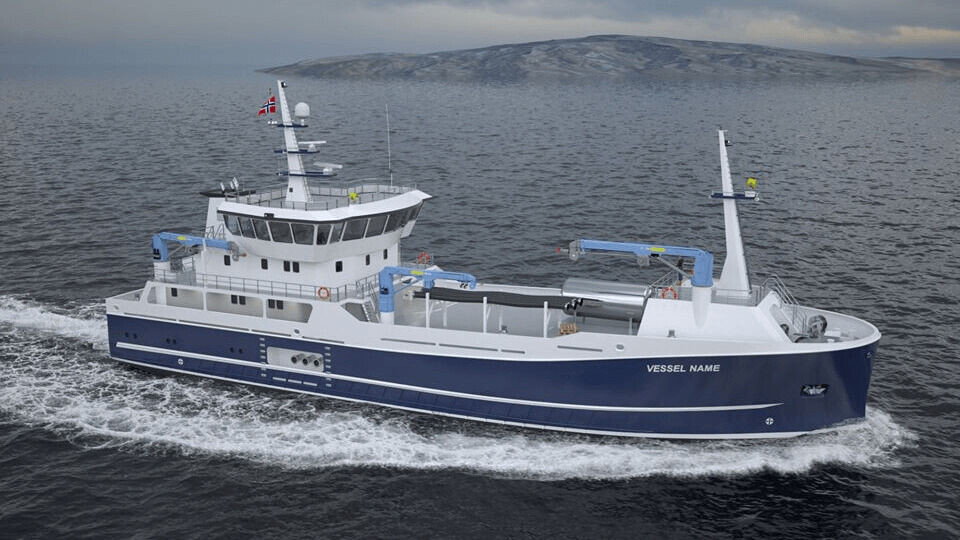
Fish farmers pool resources to build processing ship
Four Norwegian salmon farming companies have teamed up to build a process boat for slaughtering and transporting their fish.
Tombre Fiskeanlegg, Lingalaks, Austevoll Melaks and Eidesvik Laks together produce around 40,000 tonnes of salmon annually.
The boat is scheduled to handle the entire harvest volume and will also at times have the capacity to take on external assignments, Lingalaks said in a Facebook post.
Made in Spain
The new build is designed and developed in collaboration with Maritime Engineering AS and shipping company Artic Group AS. It will be built at Astilleros Balenciaga SA in San Sebastian, Spain, and will have a load capacity of 600m³.
The factory and process equipment on board are being supplied by Stranda Prolog AS and Optimar AS and are designed to maximise the quality of the fish, ensure optimal hygiene and reduce the risk of infection.
The boat will have six slaughter lines, and the factory and equipment are designed for a slaughter capacity of around 120 tonnes of salmon per hour.
Greener power
Both the main engine and generators in the boat are in accordance with the future requirements for shipping, so-called IMO tier III. In addition, the boat will be prepared for future hybrid solutions such as battery and hydrogen operation.
Executives currently working on choosing which operating combination the vessel will have at delivery. The plan is also to enter into a strategic collaboration with a land facility located in Vestland, among others, to tailor unloading of the fish and secure battery charging infrastructure, Lingalaks said.
“When we designed the boat, we thought about sustainability, and focused on having as small an environmental footprint as possible,” said Ingar Fiskerstrand, chief executive of Artic Group and board chairman of Samlaks AS, s company overseeing the project whose directors include members of the fish farming companies involved.
“The boat will contribute to reduced emissions to air, in addition to less waste, improved fish welfare and reduced risk of infection by slaughtering the fish at the cage edge and completely closed transport. We have designed a boat for the future.”























































